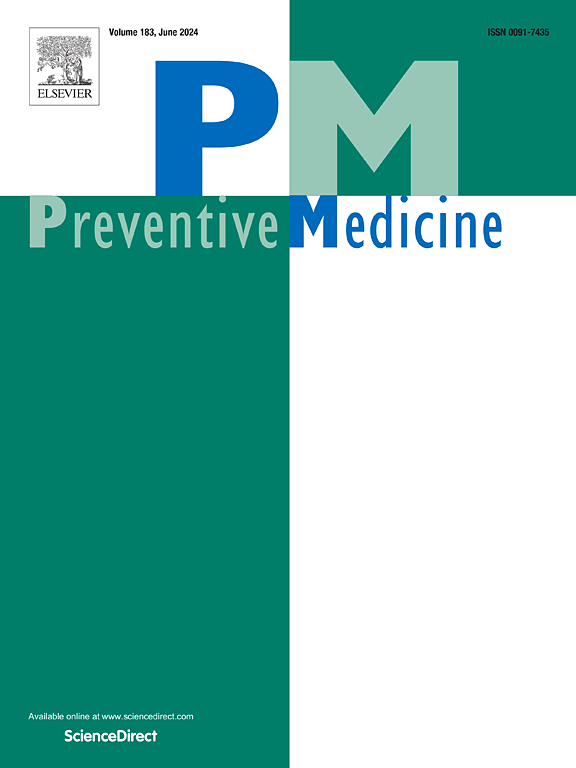Association between self-reported child maltreatment and risk of hospital-treated infectious diseases in middle-aged and older adults: A UK Biobank cohort study
IF 4.3
2区 医学
Q1 MEDICINE, GENERAL & INTERNAL
引用次数: 0
Abstract
Objective
This study aimed to explore the association between child maltreatment and hospital-treated infectious diseases in middle-aged and older adults.
Methods
145,151 participants aged 38–72 years from the UK Biobank between 2006 and 2010 were enrolled and interviewed. Child maltreatment included five types: physical abuse, physical neglect, emotional abuse, emotional neglect, and sexual abuse. Patterns of maltreatment were identified using latent class analysis (LCA). Cox regression was employed to estimate the associations between child maltreatment (number of types, individual types, and patterns) and infectious diseases. Further, we evaluated potential mediators using mediation analysis.
Results
Over a median follow-up of 13.4 years, 22,688 participants (12.26 per 1000 person-years) were hospitalized for an infectious disease. Participants reporting any maltreatment had elevated infectious diseases risk (HR 1.18, 95 % CI: 1.15–1.21) than those without maltreatment. A dose-response relationship was observed between the number of maltreatment types and infectious disease (one, HR 1.09 [95 % CI 1.06–1.13]; two, HR 1.17 [95 % CI 1.12–1.23]; three to five, HR 1.48 [95 %CI 1.41–1.55]; Ptrend < 0.001). Each type of maltreatment was associated with increased infectious diseases risk. LCA identified four patterns (low maltreatment, child neglect, child abuse, and poly-maltreatment), with those who experienced poly-maltreatment exhibiting the highest infectious diseases risk (HR 1.51, 95 % CI: 1.43–1.59). The association between child maltreatment and infectious diseases was mediated by C-reactive protein, phenotypic age acceleration, loneliness, psychiatric disorders, and unhealthy lifestyles.
Conclusions
Child maltreatment may increase susceptibility to a broad spectrum of infectious diseases in adulthood, highlighting the need for early-life maltreatment prevention policies.
中老年人自我报告的儿童虐待与医院治疗传染病风险之间的关系:英国生物库队列研究。
研究目的本研究旨在探讨中老年人中儿童虐待与医院治疗的传染病之间的关系。方法:对 2006 年至 2010 年间英国生物库中年龄在 38-72 岁之间的 145,151 名参与者进行了登记和访谈。儿童虐待包括五种类型:身体虐待、身体忽视、情感虐待、情感忽视和性虐待。采用潜类分析(LCA)确定了虐待模式。采用 Cox 回归估算儿童虐待(类型数量、个体类型和模式)与传染病之间的关联。此外,我们还利用中介分析评估了潜在的中介因素:在 13.4 年的中位随访期间,22,688 名参与者(每千人年 12.26 人)因感染传染病而住院。与未受过虐待的参与者相比,报告受过虐待的参与者患传染病的风险更高(HR 1.18,95 % CI:1.15-1.21)。虐待类型的数量与传染病之间存在剂量反应关系(一次,HR 1.09 [95 % CI 1.06-1.13];两次,HR 1.17 [95 % CI 1.12-1.23];三次至五次,HR 1.48 [95 %CI 1.41-1.55];Ptrend 结论:儿童受虐待可能会增加成年后对多种传染病的易感性,因此需要制定早期虐待预防政策。
本文章由计算机程序翻译,如有差异,请以英文原文为准。
求助全文
约1分钟内获得全文
求助全文
来源期刊

Preventive medicine
医学-公共卫生、环境卫生与职业卫生
CiteScore
7.70
自引率
3.90%
发文量
0
审稿时长
42 days
期刊介绍:
Founded in 1972 by Ernst Wynder, Preventive Medicine is an international scholarly journal that provides prompt publication of original articles on the science and practice of disease prevention, health promotion, and public health policymaking. Preventive Medicine aims to reward innovation. It will favor insightful observational studies, thoughtful explorations of health data, unsuspected new angles for existing hypotheses, robust randomized controlled trials, and impartial systematic reviews. Preventive Medicine''s ultimate goal is to publish research that will have an impact on the work of practitioners of disease prevention and health promotion, as well as of related disciplines.
 求助内容:
求助内容: 应助结果提醒方式:
应助结果提醒方式:


